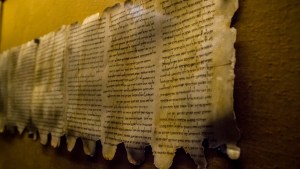A nearly 20-year excavation taking place in the ancient Turkish city of Hadrianopolis has yielded terrific floor mosaics dating to the early Byzantine period. It is yet unknown exactly when they were installed, but the city was populated from the 1st century BC until around the 8th century AD.
Arkeonews reports that the site of Hadrianopolis, so named for the Roman Emperor Hadrian, is also known as “Zeugma of the Black Sea,” a name that recalls another Turkish site’s many similar mosaics. The site, located in modern day Turkey, has had active excavations operating in one form or another since 2003.
Sinan Ekici, an official from the excavation team, noted that the discovery of these new mosaics came while excavating the walls of a Roman castle. He said that the remarkable artworks suggest that the castle was “a beautiful building.”
The art
The mosaics discovered in Hadrianopolis are in very good condition, but have suffered some damage in the millennia since they were installed. The section of mosaic featured in the video above shows that what was once a square mosaic scene is now L-shaped, with the remainder deteriorated over time.
The artwork features many animals, including pheasants, ducks, chickens, and peacocks. Ornamented fruit baskets can also be seen in the tiled floors. Speaking to Hurriyet Daily News, Ersin Çelikbaş, an associate professor from Karabük University’s Archaeology Department, said of the art:
“Particularly, bird figures are striking in the mosaics. There is an amphora, and there is a fruit basket made in a style we have not seen before. Pears and grapes were embroidered on the fruit basket, and pomegranate was added next to it. The fruit basket is decorated like a still life painting. With this feature, we can say that an important scene has been added to Hadrianopolis’ mosaic collection.”
Archaeologists have yet to determine exactly what the building was used for, but they have their suspicions. During the dig, they found references to Asclepius, the Greco-Roman god of healing, which suggests that the building could have been used as a medical facility. Historical records show that there was indeed such a facility in the region around the time the building still stood.

